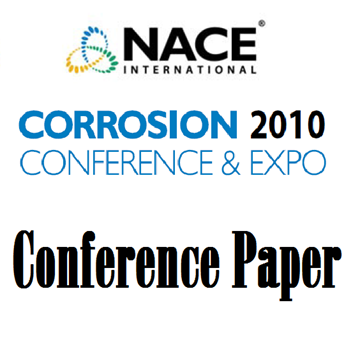Search
09447 Microgalvanic Current Mapping of Magnesium / Aluminum Galvanic Couple by Scanning Vibrating Electrode Technique (SVET)
Also Purchased
10025 Remoteness of Impressed Current Anode Ground Beds
Product Number:
51300-10025-SG
ISBN:
10025 2010 CP
Publication Date:
2010
$20.00
99628 POTENTIAL A’ITENUATION AND ANODE CURRENT OUTPUT DETERMINATION ALTERNATIVES FOR MARINE PIPELINES AND RISERS
Product Number:
51300-99628-SG
ISBN:
99628 1999 CP
$20.00
00742 A CASE STUDY OF SOLAR MAGNESIUM ANODES USED IN HIGH SOIL RESITIVITY ENVIRONMENTS
Product Number:
51300-00742-SG
ISBN:
00742 2000 CP
$20.00




